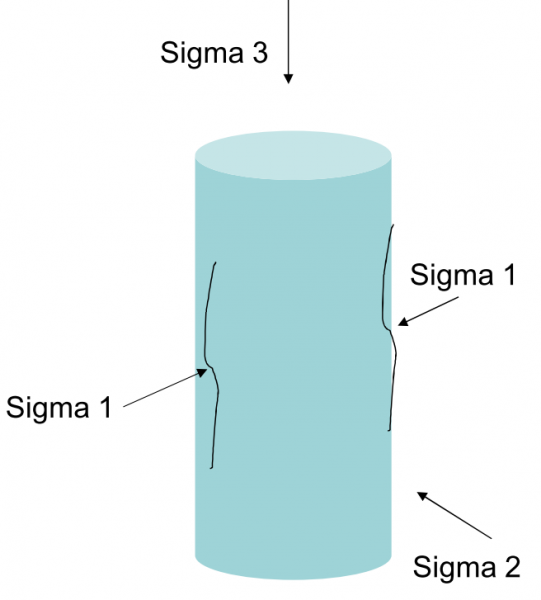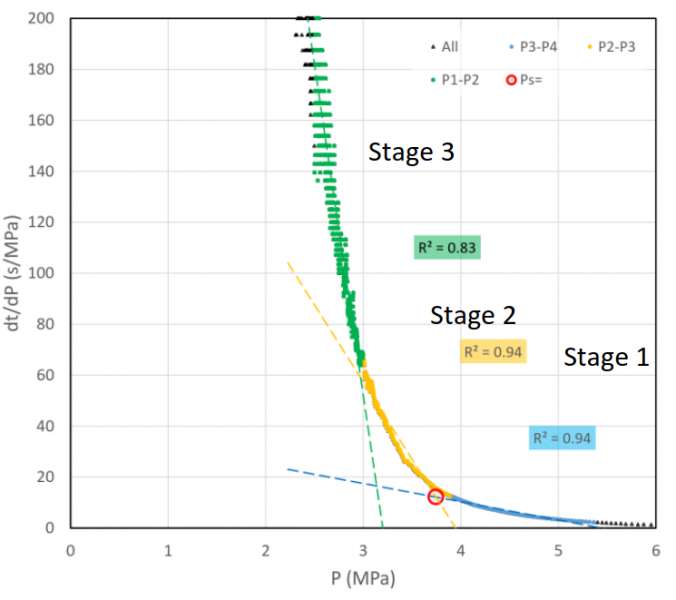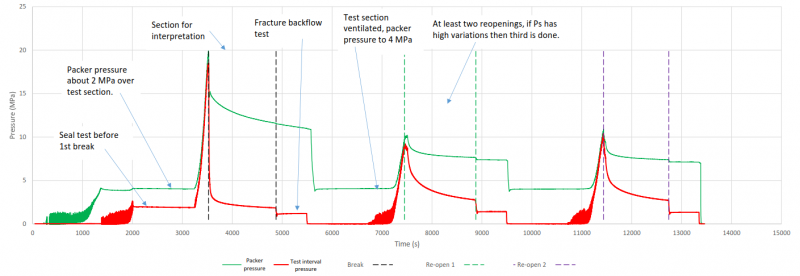Hydraulic fracturing stress measurement technique
 In the hydraulic fracturing (HF) stress measurement an inflatable double packer system is used to seal a test section in a borehole. The test section is preferably located in primary stress state, where no interferences from tunnel are present. The test section is pressurized using water and the water pressure is increased until a new rock fracture is induced. The packers must have 2 MPa higher pressure than the test section in order to seal the test section properly and to prevent leaking through the packers. Also in the classic HF measurement the test section must locate in intact rock. A schematic illustration of the hydrofracturing tool is presented below.
In the hydraulic fracturing (HF) stress measurement an inflatable double packer system is used to seal a test section in a borehole. The test section is preferably located in primary stress state, where no interferences from tunnel are present. The test section is pressurized using water and the water pressure is increased until a new rock fracture is induced. The packers must have 2 MPa higher pressure than the test section in order to seal the test section properly and to prevent leaking through the packers. Also in the classic HF measurement the test section must locate in intact rock. A schematic illustration of the hydrofracturing tool is presented below.

The HF stress measurement is based on assumption that the boreholes used in measurement are perpendicular to the principal stresses. The HF test effectively measures two stresses that are perpendicular to the borehole. Of these two stresses one is measured directly and the one perpendicular to it is calculated from an elastic solution. In a typical HF measurement arrangement the borehole is aligned vertical and the vertical stress is assumed to be gravitational, this way all of the stress components and the principal stress orientation can be interpreted from the measurement. Horizontal measurements to determine the vertical stress are used also.
 Using the methodology developed by Hayashi & Haimson (1991) the minimum principal stress component can be determined with increased accuracy from the from pressure decrease rate against fluid pressure curve following the shut-in pressure. The pressure decrease rate curve has three main stages that can be identified:
Using the methodology developed by Hayashi & Haimson (1991) the minimum principal stress component can be determined with increased accuracy from the from pressure decrease rate against fluid pressure curve following the shut-in pressure. The pressure decrease rate curve has three main stages that can be identified:
- Stage where the fracture growth has ended, the fracture tip starts to close.
- Fracture closure.
- Pressure decay after fracture closure.
The pressure at the end of stage 1 gives a good estimate of the minimum principal stress. The stages are illustrated in Figures below.
References
Hayashi, K., & Haimson, B. 1991. Characteristics of Shut-in Curves in Hydraulic Fracturing Stress Measurements and Determination of in Situ Minimum Compressive Stress. Journal of Geophysical Research, Vol. 96, No. B11, Pages 18,311 – 18,321.
Zang, A., & Stephansson, O. 2010. Stress Field of the Earth’s Crust. Springer Netherlands. 978-1-4020-8443-0

